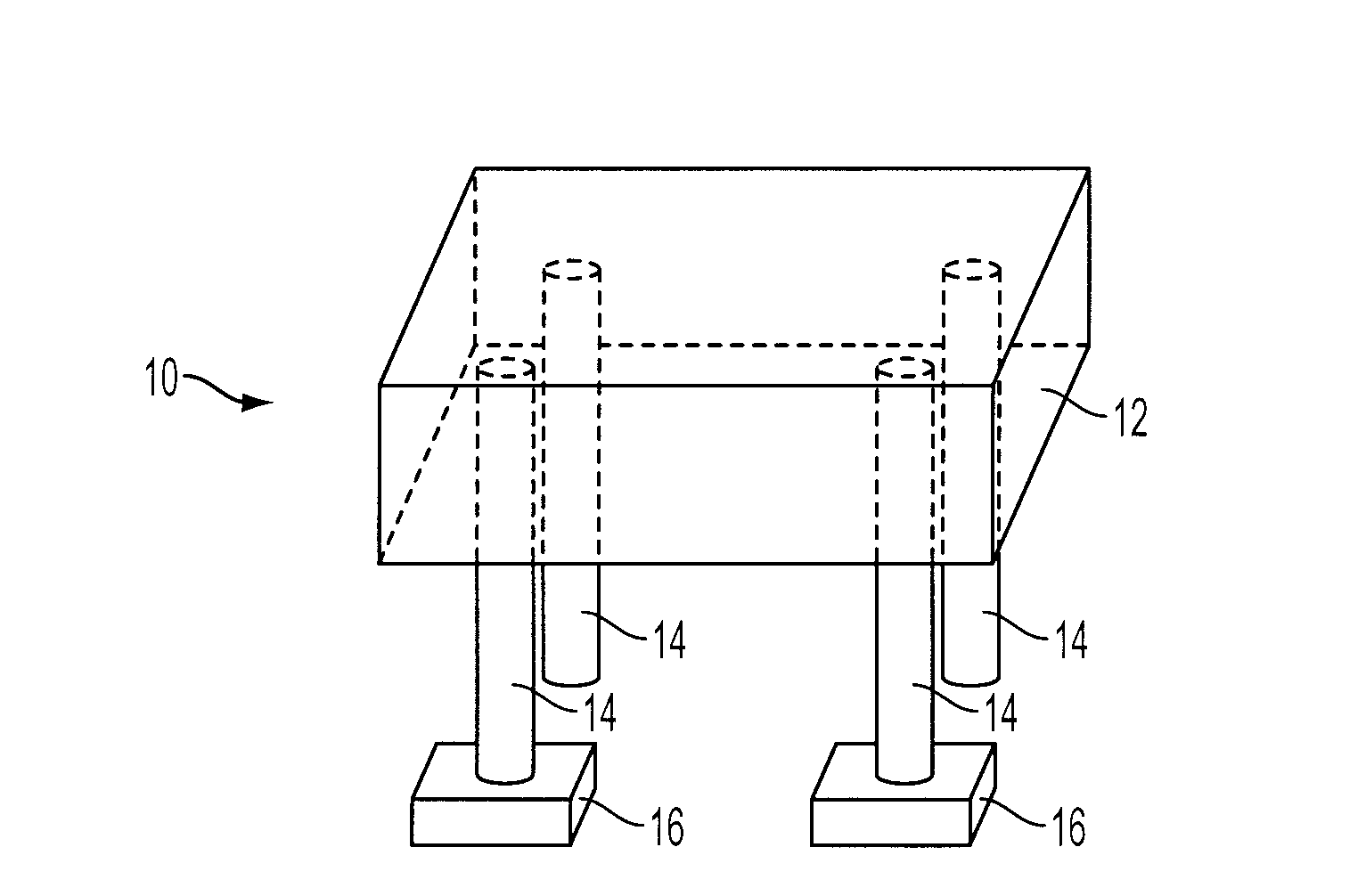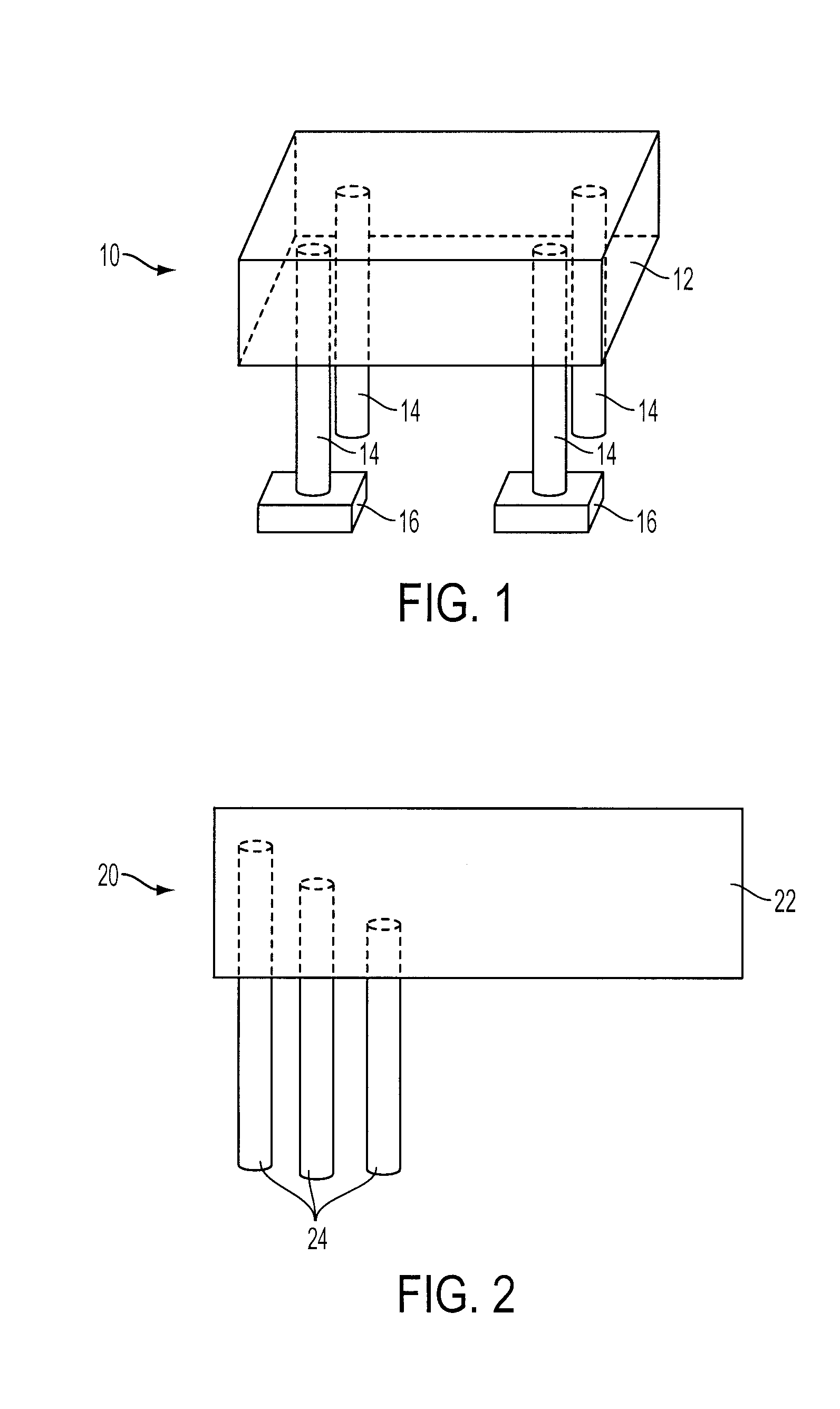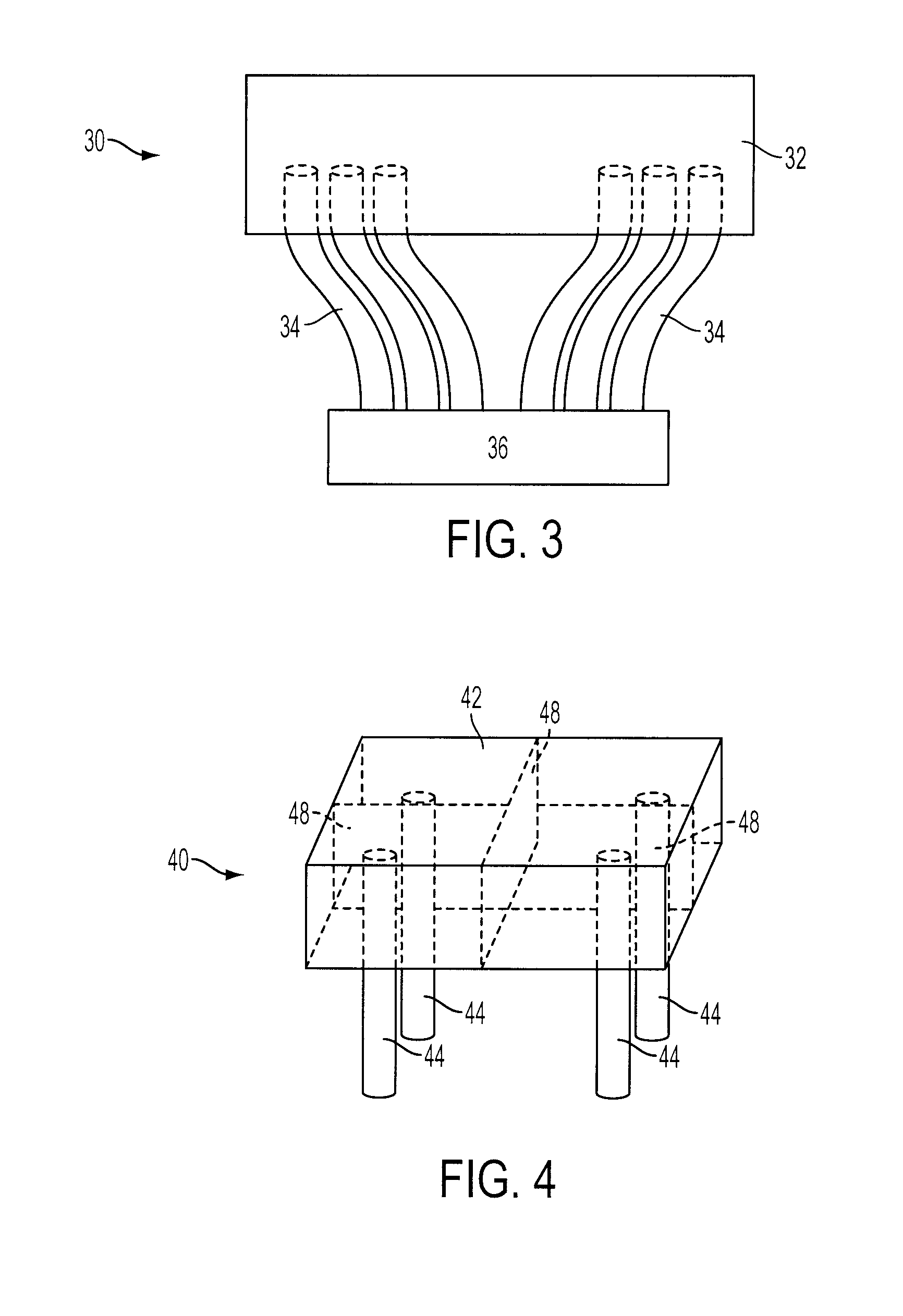Monolithic Scintillators With Optical Fiber Read-Out
- Summary
- Abstract
- Description
- Claims
- Application Information
AI Technical Summary
Benefits of technology
Problems solved by technology
Method used
Image
Examples
embodiment 10
[0016]In the embodiment 10 illustrated in FIG. 1, the optical fibers 14 are coupled to the scintillation crystal 12 by virtue of input end portions of the fibers 14 being embedded within the scintillation crystal 12. In such instance, the embedded input end portions of the optical fibers are suitably unclad or roughened so that light may enter the fibers most easily, whereas the portions of the optical fibers that are exterior to the scintillation crystal 12 are suitably clad so as to promote transmission of light along the fibers to the photosensors 16.
[0017]Furthermore, the end portions of the optical fibers 14 may be embedded by pre-forming cavities using high-temperature materials around which the crystal is grown; alternatively, very small cavities may be formed in the scintillation crystal 12 after it is manufactured, e.g., by laser drilling or mechanical drilling, and the ends of the optical fibers inserted into and fixed within the cavities, e.g., using optically transmissiv...
embodiment 20
[0020]In another embodiment 20 illustrated in FIG. 2, optical fibers 24, each coupled to a photosensor (not shown), may be embedded within a monolithic scintillation crystal 22. In this embodiment 20, the optical fibers 24 are suitably different lengths, with upper ends (as shown in the Figure) extending into the scintillation crystal 22 to different extents and lower ends (as shown in the Figure) essentially aligned. Alternatively, the optical fibers 24 may all have the same length, but still extend into the scintillation crystal 22 to different extents. By sensing which optical fiber 24 carries the strongest light signal, and knowing the depth of penetration (and, if necessary, the relative X-Y spacing) of the various fibers, one may ascertain the depth of interaction (DOI) information for any given scintillation event. These variant-length optical fibers 24 may constitute a set of fibers that is supplemental to a set of equal-length, equal-depth-of-penetration fibers such as thos...
embodiment 60
[0025]Similarly, in the embodiment 60 illustrated in FIG. 6, the optical fibers 64 are aligned with and coupled in parallel relation to the radiation receiving surfaces of the scintillation crystal 62 instead of being oriented perpendicular to such surfaces as in FIGS. 1-4. In this embodiment, the optical fibers 64 coupled to one surface of the scintillation crystal 62 are orthogonal to the optical fibers 64 coupled to the opposite surface of the scintillation crystal 62. As shown, the fibers coupled to one surface may be coupled to a first common position-sensitive photosensor 66 and the fibers coupled to the other surface may be coupled to a second common position-sensitive photosensor 66. Alternatively, the fibers on one or both surfaces may be bent at a 45° and coupled to a single, common position-sensitive photosensor that is oriented at the corner of the scintillation crystal 62.
[0026]This arrangement of the fibers provides strong capability to differentiate the X-Y position o...
PUM
 Login to View More
Login to View More Abstract
Description
Claims
Application Information
 Login to View More
Login to View More - R&D
- Intellectual Property
- Life Sciences
- Materials
- Tech Scout
- Unparalleled Data Quality
- Higher Quality Content
- 60% Fewer Hallucinations
Browse by: Latest US Patents, China's latest patents, Technical Efficacy Thesaurus, Application Domain, Technology Topic, Popular Technical Reports.
© 2025 PatSnap. All rights reserved.Legal|Privacy policy|Modern Slavery Act Transparency Statement|Sitemap|About US| Contact US: help@patsnap.com



